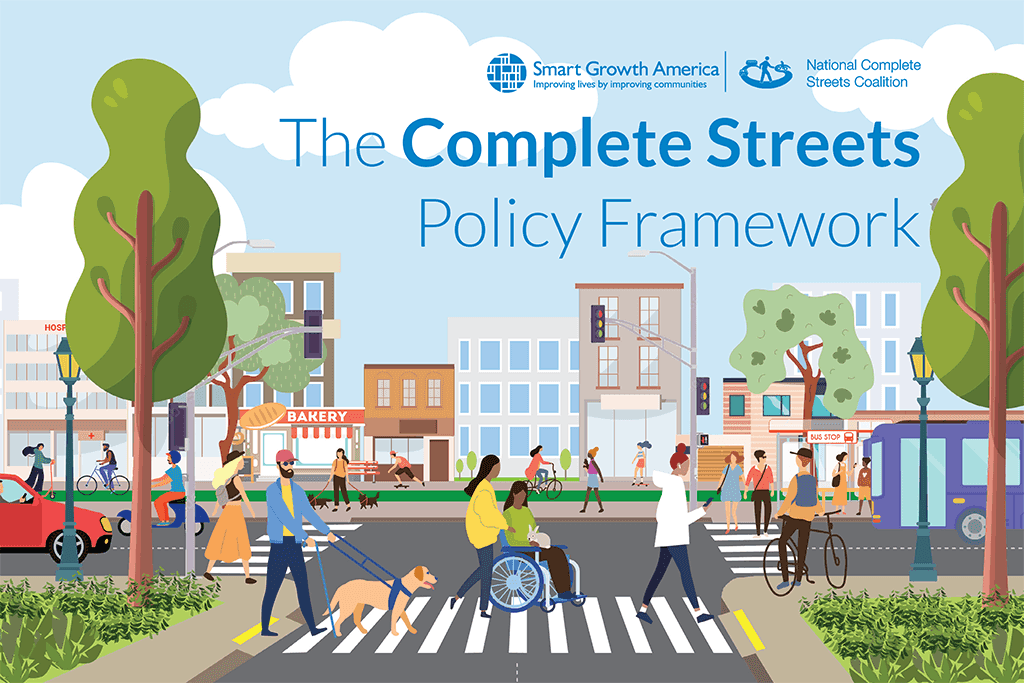
News
By Steve Davis, April 24, 2023
One of the questions we are routinely asked is, “what exactly goes into an effective and strong Complete Streets policy?” So, we’re walking through the 10 elements within every strong Complete Streets policy, leading up to the long-awaited release of a brand new edition of The Best Complete Streets Policies report which scores all policies across the country.

To understand what makes a strong policy, it’s worth a brief look back in time
Having coined the term “Complete Streets” in the early 2000s, the nascent National Complete Streets Coalition succeeded in popularizing a fresh approach to street design that prioritizes making streets safe for people of all ages and abilities, however they get around. But by the mid-2010s, as pedestrian fatalities increased to historic levels, the Coalition realized that many of the policies being passed were failing to have the desired effect of making streets safer. Most alarmingly, the crisis of people being struck and injured or killed while walking or biking was not felt evenly—people of color and people in lower-income areas were being killed disproportionately.
There were two primary reasons that the policies weren’t having the fullest effect: First, the early versions of these policies lacked accountability measures to ensure that the Complete Streets policies were fully put into practice. Second, most policies failed to specify and require the incredibly difficult work of institutionalizing the approach, such as training agency staff, traffic engineers, and project managers.
It’s worth noting that Complete Streets represents a massive paradigm shift from a status quo that prioritizes moving vehicles quickly at almost any cost. And these limitations in the early policies also came against a backdrop of the federal approach to street design that continued to prioritize speed above safety. This is why, in addition to our primary role encouraging strong local, state, or federal Complete Streets policies, as part of a broader team within Smart Growth America, we work more expansively on improving safety by pressing for changes to the transportation standards, design guides, models, and measures that contribute to producing streets that are dangerous by design.
(We also know that the term is frequently co-opted by transportation agencies or other entities who want to put a veneer of “safety” on projects that continue to prioritize speed over people and safety, something we addressed just recently in this post.)
While the Coalition succeeded in putting this brand new concept on the map, fostering an incredibly powerful movement from coast to coast, and encouraging local and state governments to reconsider their approaches to street design, it was also time to re-evaluate what should go into a strong Complete Streets policy.
And so in 2018, the Coalition produced an improved framework for Complete Streets policies that requires binding language and more accountability to ensure that any policy produces tangible changes and prioritizes the needs of underinvested and underserved communities. The Complete Streets Policy Framework outlines 10 elements of a strong policy which represent the current best practices for creating a policy that can be implemented at any level of governance. We use this policy framework to guide communities who want to develop their own policies, and we also use these 10 elements in a grading process we use to evaluate and uplift the best Complete Streets from across the country, serving as a model for other communities.
Related News

© 2025 Smart Growth America. All rights reserved
Site By3Lane Marketing








